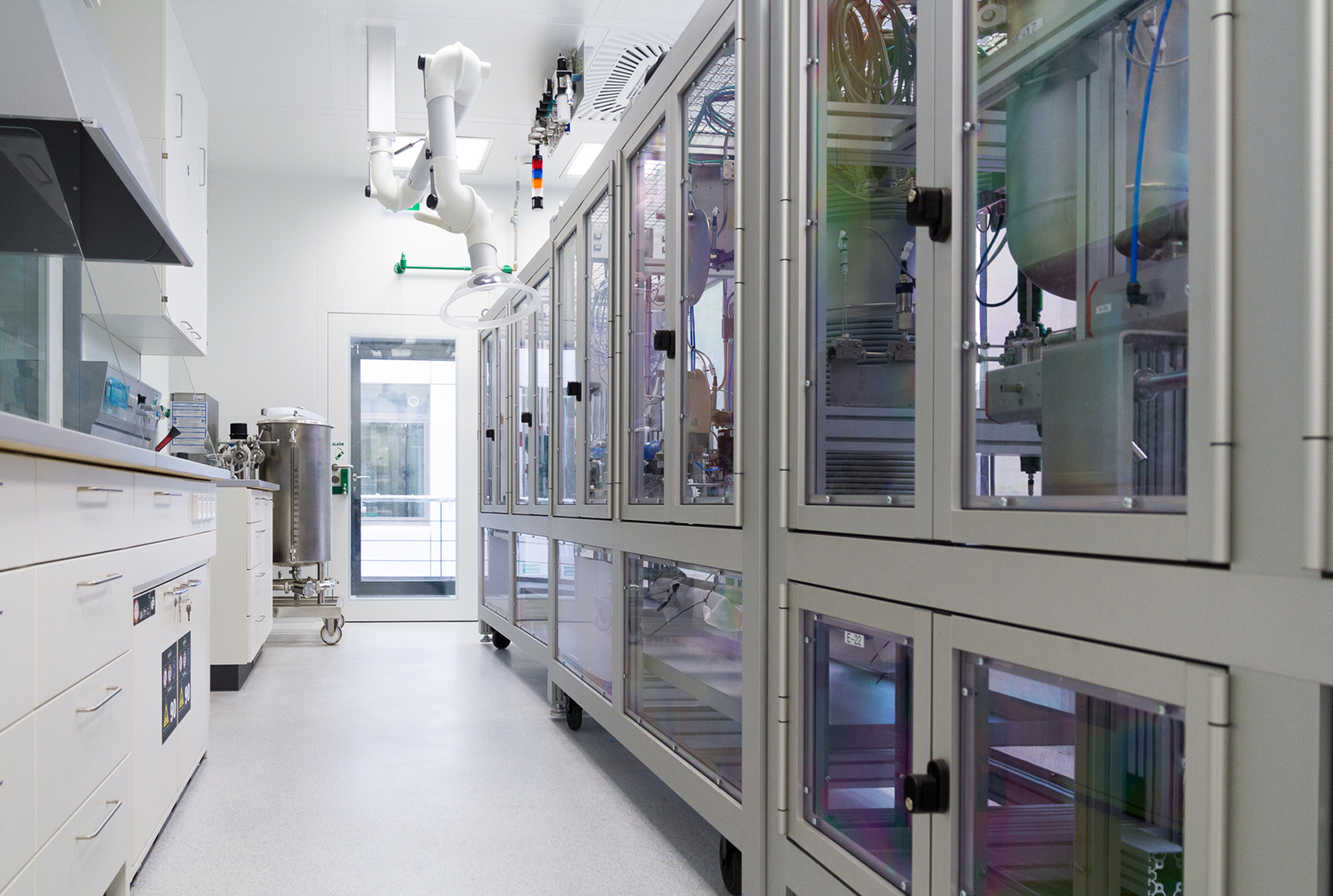Pressure change technology (PCT) is a non-thermal and non-chemical process for treating liquids with suspended microorganisms.
Principle
This method – also known as “cold pasteurization” – is mainly used between 5 °C and 40 °C at pressures of up to approx. 50 MPa. The liquid or suspension to be treated as well as the working gas (e.g. argon or nitrogen) are each placed under working pressure and then mixed homogeneously. In the case of microorganisms with cell membranes the gas diffuses through the membrane into the cells until the cytoplasm is saturated with gas. When subsequently the mixture is abruptly brought down to ambient pressure, the gas resumes its original gaseous state of aggregation and expands. This process destroys the cells eruptively. Cavitation effects may also result in damage to particle surfaces.
 Fraunhofer Institute for Interfacial Engineering and Biotechnology IGB
Fraunhofer Institute for Interfacial Engineering and Biotechnology IGB
